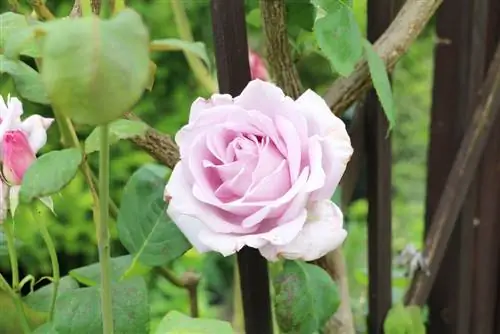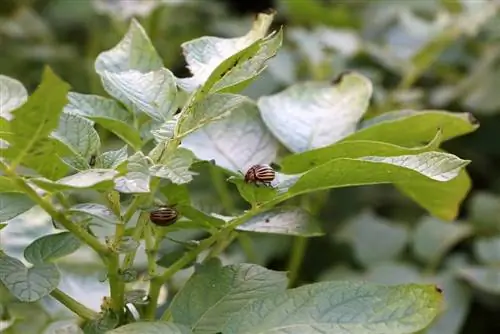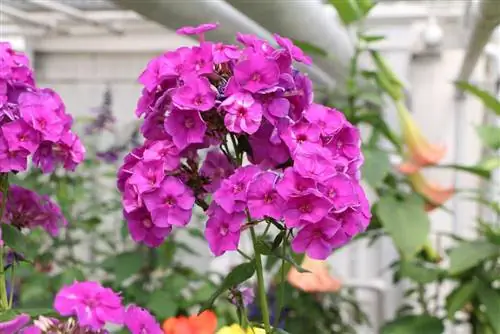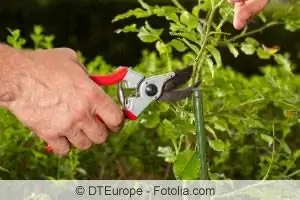- Author admin [email protected].
- Public 2023-12-17 03:39.
- Last modified 2025-01-24 12:45.
The Rosa rugosa has also been known and popular in local latitudes since around 1854. Its original homeland is East Asia, so it is very robust, frost-hardy and s alt-tolerant, which makes it very popular here. In autumn it also forms very large, tasty rose hips. The potato rose is not only native to the gardens, the local communities were also happy to settle it on the coast and here mainly in the dunes, as it can also spread quickly.
Location
The wild rose species Rosa rugosa, which gets its name potato rose from the appearance of its leaves, which resemble those of potatoes, prefers a warm and sunny location. This graceful plant often accepts partial shade, but a place that is predominantly dark due to shade should be avoided as a location. The potato rose can be cultivated in many places in the garden:
- in a hedge with several plants of the same species together
- so it can serve as a privacy screen or frame a bed
- as a border for a terrace
- also an eye-catcher as a solitaire
- together with other flowering plants in a bed
- in a front garden, as it is quite resistant to road s alt
- can also be used as a pot plant
- can also be cultivated on a bright terrace or a south-facing balcony
Tip:
The easy-care potato rose also fits well in a natural garden because it offers many birds and insects a rich supply of food, especially the rose hips that form in autumn are very popular with all kinds of local birds.
Substrate & Soil
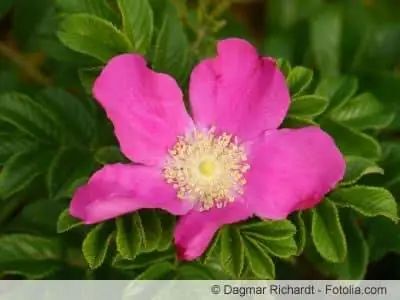
The potato rose makes no demands on the soil provided to it. Ideally, the soil is light and permeable, but the rose also thrives in heavy soil. Therefore, slightly heavy soil can be made permeable with compost and peat. If you can only offer compacted and firm soil, it should always be loosened up regularly with a garden claw. Care must be taken to ensure that the roots are not damaged.
Watering & Fertilizing
Compost, horse manure or mineral fertilizer are suitable as fertilizers for the potato rose. Liquid fertilizer for roses can also be used here. If fertilization is omitted every now and then, this is not a big deal for the robust and fast-spreading Rosa rugosa, which is a wild rose. However, it should be watered regularly, but not excessively. Like all types of roses, the potato rose copes better with a longer dry period than with too much moisture or even waterlogging.
Plants
Potato roses are often used as hedges and privacy screens because they grow very densely and reach heights of up to 1.50 meters. However, the planting distance must be taken into account. It therefore makes sense to plant the roses in two rows and in gaps; a distance of half a meter should be maintained between the individual plants. But of course the Rosa rugosa can also find other locations in a garden bed or on a house wall. Although the graceful wild rose does not require much care, it can grow unhindered and push back all other plants and even spread in and beyond the garden if it is not stopped. This underground spread is made possible by rhizomes. But there is protection against this and special attention should be paid to this when planting.
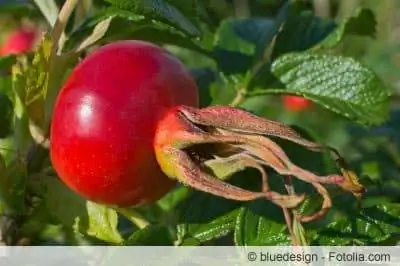
The ideal procedure for cultivating the potato rose in the garden is as follows:
- dig a sufficiently large planting hole
- Create rhizome protection around the planting hole
- Insert potato rose
- fill in prepared soil
- pile up around the plant
- water lightly
- Drainage can also be created to prevent waterlogging
- To do this, place stones or pottery shards on the ground after digging
- only then put the plant on it
- so the water can drain away better
- good for areas with a lot of rain, even in summer
- Roses prefer it dry to too wet
- if a hedge is created, determine the overall length and width
- then remove soil altogether
- apply rhizome protection along the entire length and width
- the hedge becomes dense if it is laid out in two rows in a gap
- make sure the plants are about half a meter apart
- Insert all plants and fill in prepared soil again
- hill up lightly around the plants
- water lightly
Tip:
Good rhizome protection, which usually consists of a film and a secure closure system, is available from well-stocked specialist retailers. When planting the potato rose in the garden bed, as a hedge or in the front garden, you should definitely not do without it. When using, pay attention to the manufacturer's instructions. Buckets, on the other hand, already offer natural protection.
Cultivation in a bucket
Hobby gardeners who only have a terrace or balcony available or who are afraid to use a rhizome barrier can also cultivate their Rosa rugosa in a pot. For example, this can be an eye-catcher next to a seating area. When planting in a bucket, the following should be taken into account:
- create drainage in the bucket to prevent waterlogging
- because the water accumulates more quickly in closed pots
- to do this, place small stones or shards of pottery over the planting hole
- Put plant fleece over it so that no soil gets between the drainage
- fill in some of the soil provided
- Insert rose
- fill up the remaining soil and lightly mound it up around the plant
- water only a little
- potted plant soil can be used for the substrate
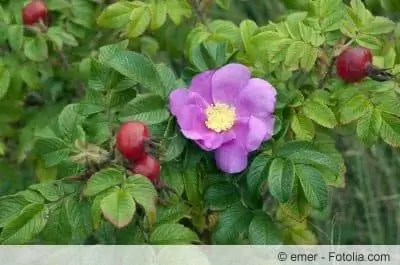
Tip:
Cultivation in a pot is also suitable in very rainy areas, as the rose plant can be placed in a pot under a roof on a terrace or balcony, as it prefers little water. If the pot has already been placed on a mobile base before planting, it can be moved to the desired location at any time without any hindrance.
Cutting
Potato roses grown in the garden or in pots are usually cut so that they retain their beautiful, dense growth. This is not necessarily a necessity, as this rose is a wild rose and therefore a wild beauty, but it should be pruned at least every two years. In the case of hedge roses, it is even advisable to prune them back annually, as clearing in this way can cause the hedge in the garden to grow up to two meters high. When making a cut, you should therefore proceed as follows:
- pruning should be done in spring
- cut into shape as desired
- leave around five buds on strong shoots
- on weaker shoots, however, only two to three buds
- When a hedge is cut, however, thinning occurs
- To do this, remove the two to three oldest shoots on each individual plant
- cut directly above the ground
- so new shoots are formed from here
Tip:
Cutting makes the hedge or individual plant denser. If this is not cut, after a while the branches will become too far apart, become thin and, above all, fewer. Once this problem has arisen, the rose is cut down to the cane so that it can sprout again and grow thickly again.
Propagate
The potato rose likes to propagate itself through runners underground. If you neglect to install protection against this spread when planting, in the worst case scenario the entire garden can be overgrown and other plants cultivated here can be pushed back or completely overgrown. However, these runners can also be used for desired propagation in other locations or other containers. To do this, in the fall after flowering, look for newly formed small plants around the mother plant and carefully dig them up.
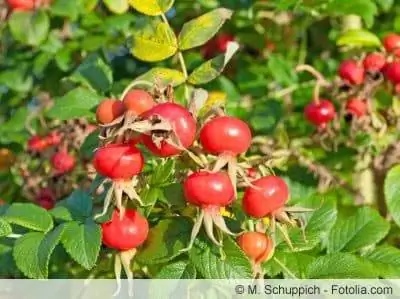
The roots of the new daughter plant are still connected to the roots of the mother plant. Alternatively, you can dig around the mother plant to find the right root. Then proceed as follows for propagation:
- Separate roots
- take small offshoot
- plant in desired location
- how to proceed with planting
Tip:
Propagation of the potato rose through the runners is very easy, because they form every year, regardless of whether a rhizome barrier has been installed or not. This only prevents the spread in the lateral directions, not the overall formation of runners, which can also form directly next to the mother plant.
Wintering
Since the potato rose is hardy and frost-resistant, no measures need to be taken here. Only if the plant was grown in a pot is it important to protect the roots. Frost can have a different effect on potted plants than is the case when they are grown in a garden bed. The soil in the pot can therefore freeze much more quickly and consistently in very icy temperatures, which could cause serious damage to the roots of even frost-hardy plants. Therefore, a potato rose grown in a pot should be winterized as follows:
- Place the bucket on a Styrofoam platen
- Wrap plant fleece or jute mats around the pot
- add mulch to the soil from above
Care errors, diseases or pests
Due to its leathery and wrinkled leaves, the potato rose is very robust and resistant to the fungal diseases known and common in roses. The resilient wild rose is also rarely attacked by pests.
Conclusion
Potato roses are particularly suitable for hobby gardeners with little time for care. In contrast to its cultivated sisters, this type of wild rose is happy with little care and thrives despite everything. Only when planting in the garden bed does the plant, which quickly spreads underground, have to be stopped by a rhizome barrier. However, once installed, it will last for many years. The potato roses are particularly suitable as a privacy hedge for neighbors or in the front garden facing the street and offer the viewer a beautiful picture when they receive their annual cut.


